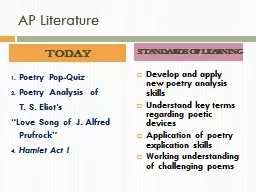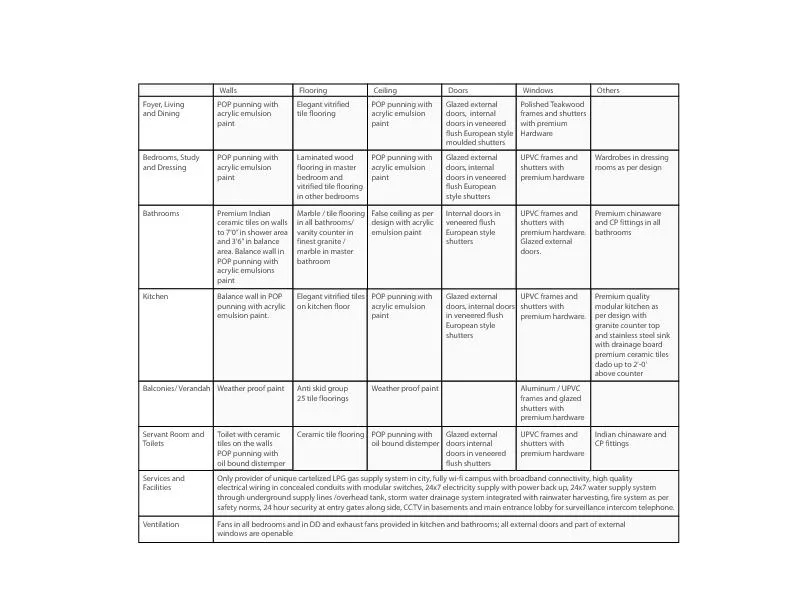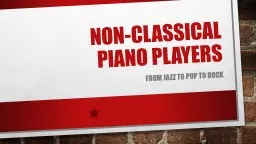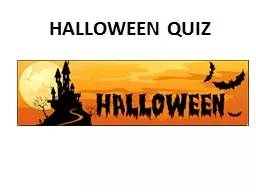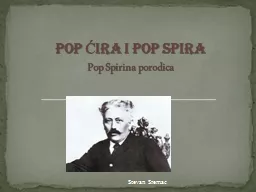PPT-Poetry Pop-Quiz Poetry Analysis of
Author : test | Published Date : 2018-10-29
T S Eliots Love Song of J Alfred Prufrock Hamlet Act I Develop and apply new poetry analysis skills Understand key terms regarding poetic devices Application
Presentation Embed Code
Download Presentation
Download Presentation The PPT/PDF document "Poetry Pop-Quiz Poetry Analysis of" is the property of its rightful owner. Permission is granted to download and print the materials on this website for personal, non-commercial use only, and to display it on your personal computer provided you do not modify the materials and that you retain all copyright notices contained in the materials. By downloading content from our website, you accept the terms of this agreement.
Poetry Pop-Quiz Poetry Analysis of: Transcript
Download Rules Of Document
"Poetry Pop-Quiz Poetry Analysis of"The content belongs to its owner. You may download and print it for personal use, without modification, and keep all copyright notices. By downloading, you agree to these terms.
Related Documents

